How to Create a Quiz for Your Online Classes Using Google Slides

Quizzes are great tools to get your audience involved, as they need to participate and give their own answers. In fact, they are particularly useful when teaching children, as their attention gets diverted quite easily. This way, they will learn in an interactive and entertaining way.
Creating a quiz is not a complex thing to do, but it requires some time. In this tutorial, we are going to teach you how to create some question slides for your students using Google Slides. Let’s get started!
Creating the Main Page of the Quiz
- Open your Google Slides presentation.
- Select or create the slide to which you want to add the quiz.
- Type the title and the subtitle of your question using text boxes. Remember to use the fonts of the theme. The resulting slide will be coherent with the rest of the presentation and aesthetically appealing.
- If you need to change the font, size or style of your text, use the edition tools in the toolbar.
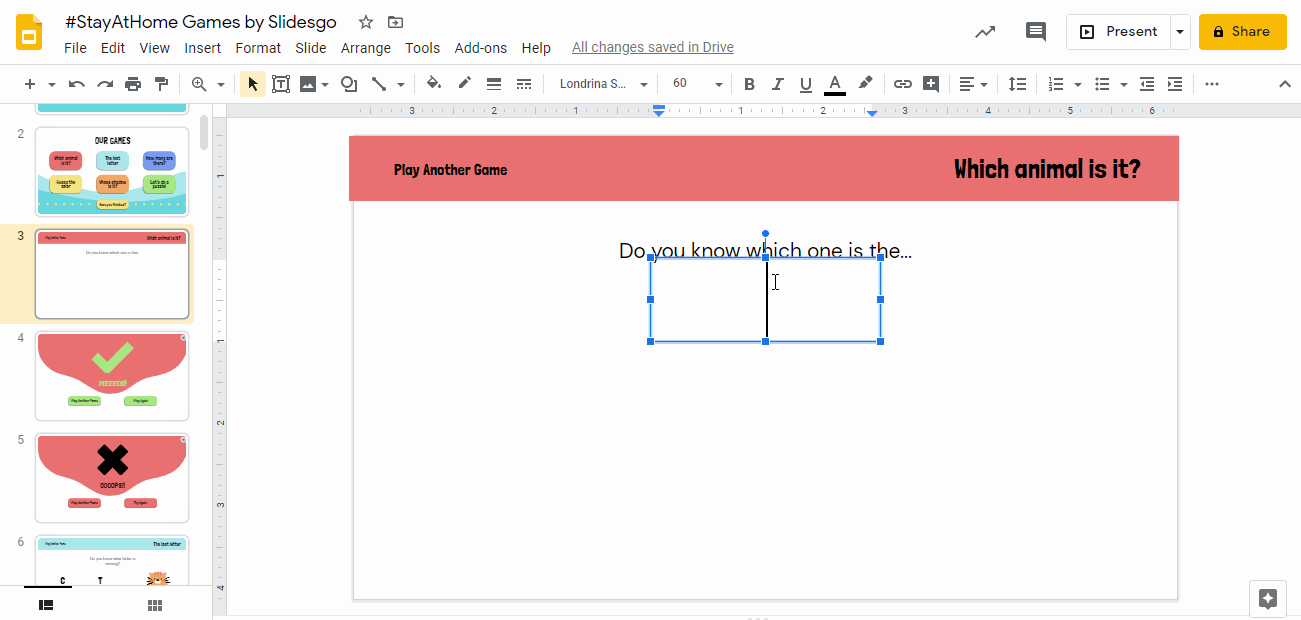
- Add images if you need them. If you are creating this interactive game for children, it is worth adding some cute pictures or drawings to make it more appealing. If you don’t know how to insert, crop or mask images, you can learn more about it in this tutorial. Here, we have embedded three different illustrations that will work as reply options.
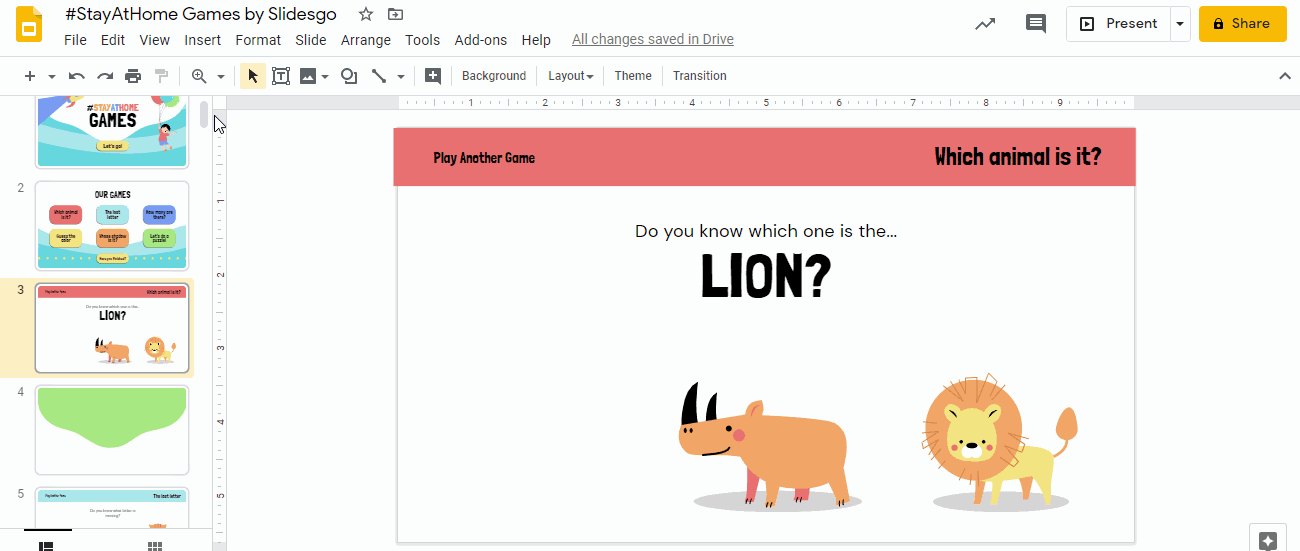
Pro tip: if you need more images or illustrations go to the Alternative resources slide at the end of the presentation.
- You need to add button-like shapes to your options. Later on, we will link each button to a “correct” or “wrong answer” slide. We are going to use circles for our example. In Insert, select Shape → Shapes → Oval.
- Click and drag the cursor to add the circle.
- Resize it clicking and dragging the squares of the outline. If you keep pressed Shift, you’ll create a perfect circle.
- Change the color of the shape according to the colors of the theme.
- Click Fill color and choose the hue that appears in the inside of the shape.
- Click Border color and do the same for the border of the shape.
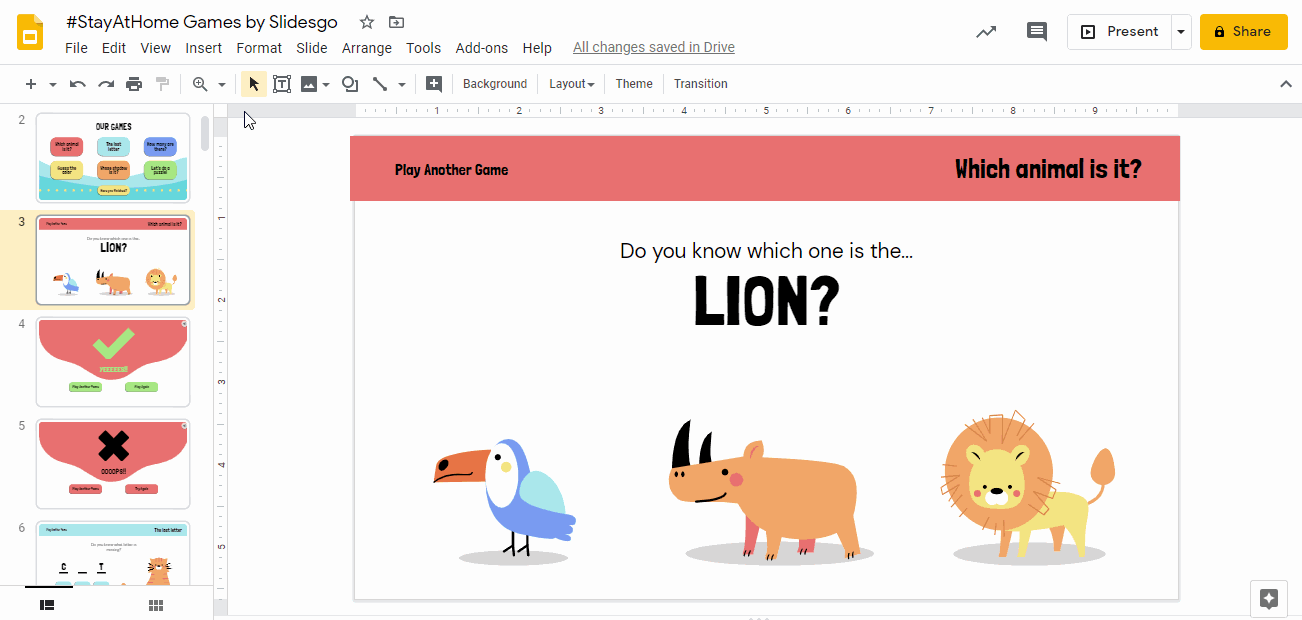
- To add more buttons, keep pressing the Ctrl button while you click on your first button and drag the copy close to the image of the other animals. Pressing Shift at the same time will keep them aligned.
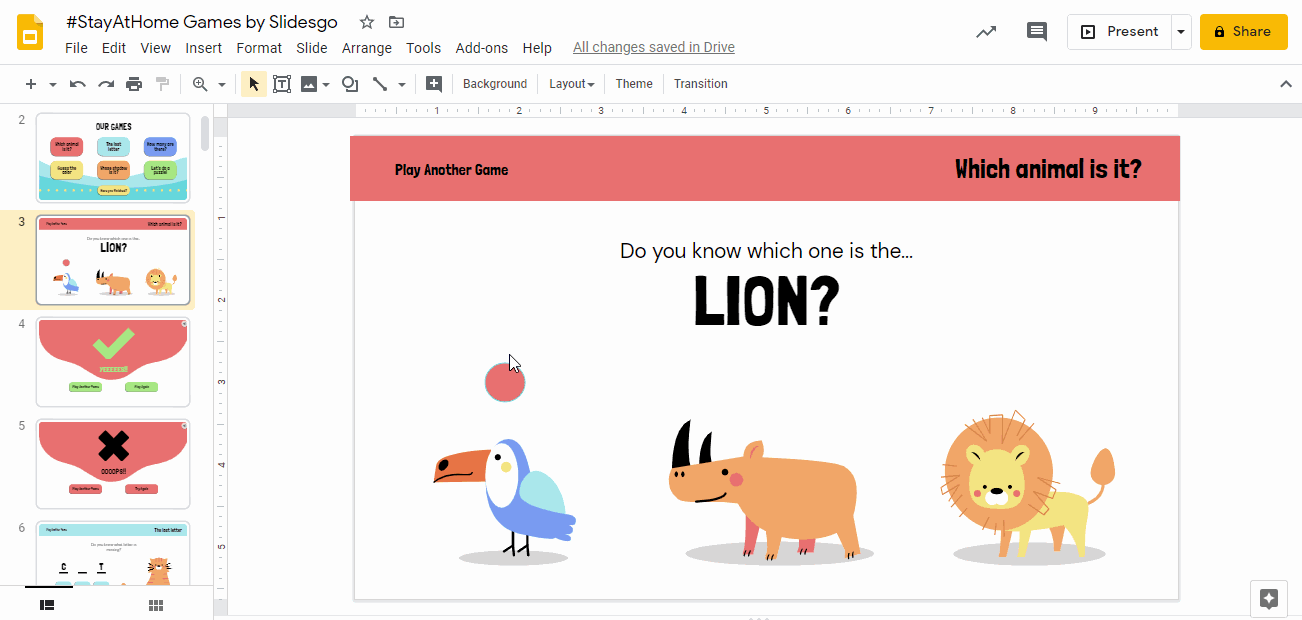
Pro Tip: You can add a shadow to your circles to make them look like real buttons. In the toolbar click on More (...) → Format options → Drop shadow and choose the effect that suits you best. To learn more about how to apply effects to an image in Google Slides, you can read this tutorial. If the screen resolution of your computer is high enough, the More (...) button won’t appear. Instead, the “Format options” button will appear directly on the toolbar.
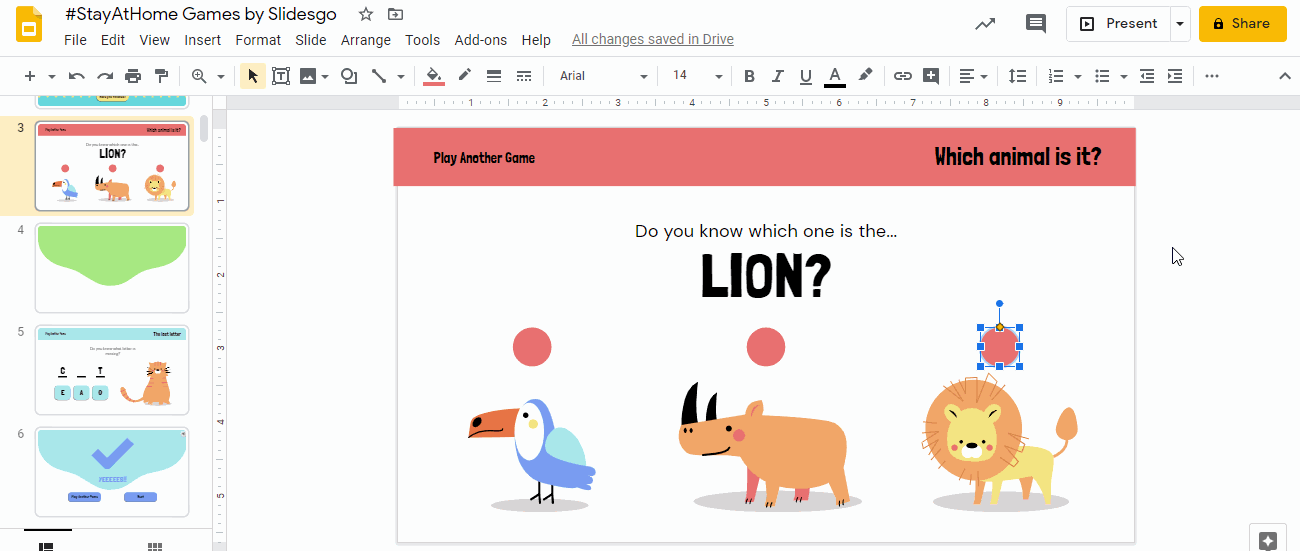
- Let’s continue with the buttons. As we have three options, we are going to name them A, B and C. Click on each circle and type directly into the shape.
- Change the font and size of the letters in the Font and Font size menus in the toolbar. Voilà!
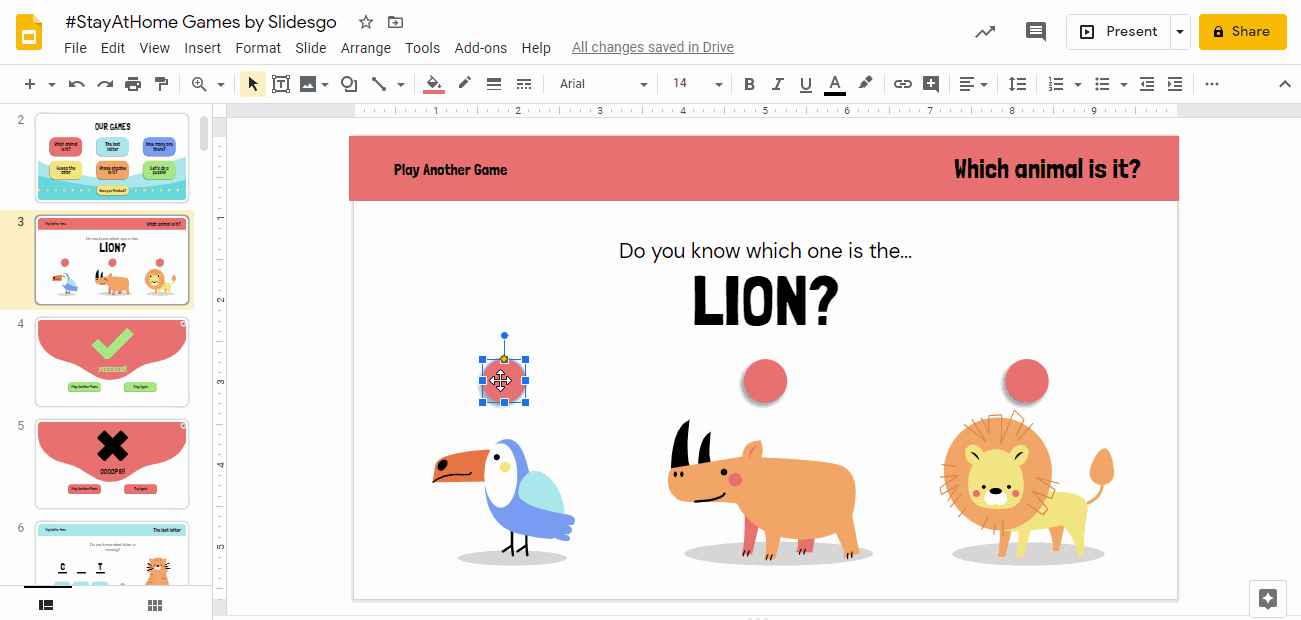
Creating the “Right Answer” Slide
Once that the multiple-question slide is ready, we need to create two more slides: one that indicates that the answer that your audience has marked is correct and the other telling the opposite thing. Here we are going to show you how to design the “Right Answer” slide.
- Go to the toolbar. Select Insert → New Slide or simply. You need to create the new slide just after the “question” one, so be sure that you are there when you add a new one.
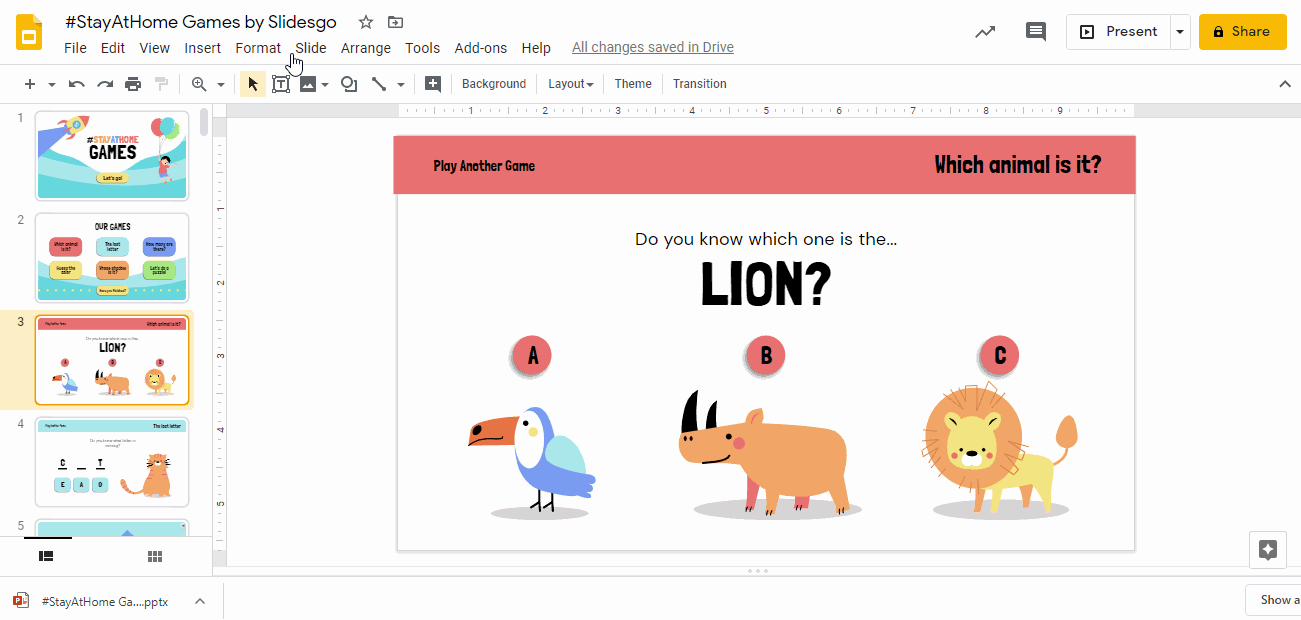
- It’s time for you to design the contents and layout. Choose the colors and fonts of the theme.
- It’s important for your students that you encourage them. Add symbols as a check mark and a message of the type “Correct!”, “Well done!”, “Yes!”, “You’ve made it” and the like.
- The “right answer” slide is ready!
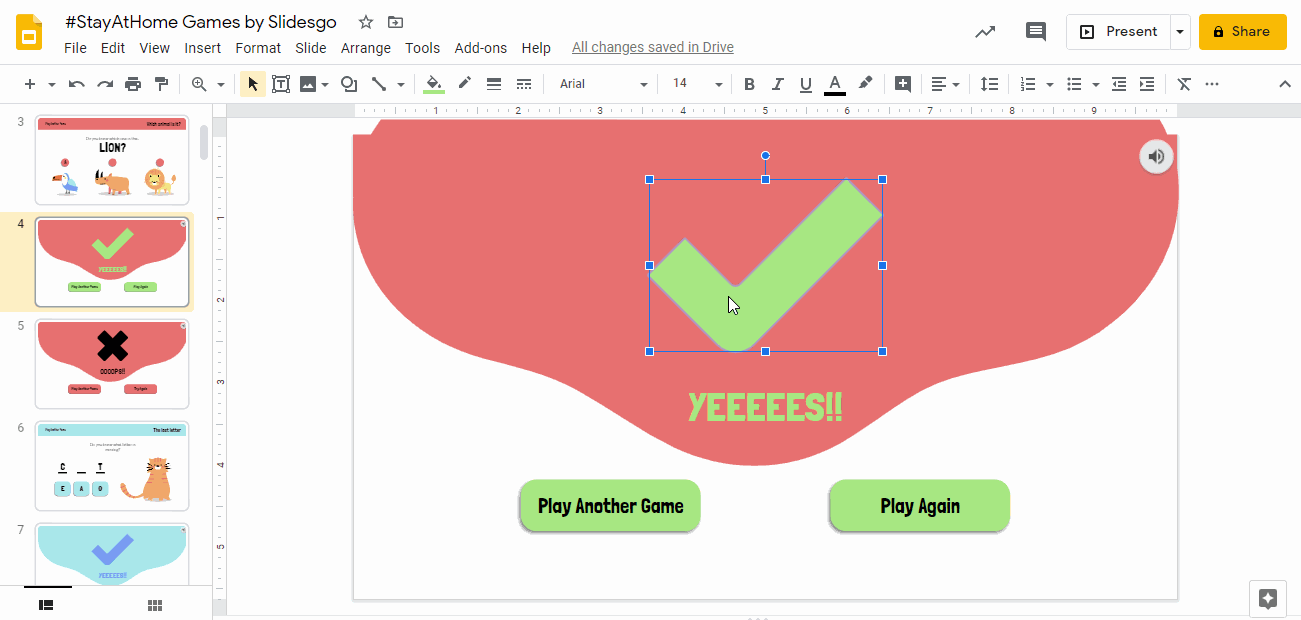
Creating the “Wrong Answer” Slide
You need to add a new slide for those cases in which your student gives a wrong answer. The process is quite similar to the one above.
- Add and format a new slide. If you want to learn more about how to add, duplicate, move delete or hide slides, you can read this tutorial.
- In this case, you could add a symbol that represents that the answer is not correct, such as “X”. Add a message that lets your audience know that the response is incorrect, encouraging them: “Try again”, “Oops!”. It needs to be simple and understandable.
- Make sure that you add a button to redirect the student to the “question slide.” You can add a text such as “Try again” or something similar.
- To create the button, add a shape (as in the previous section) and apply different colors and effects.
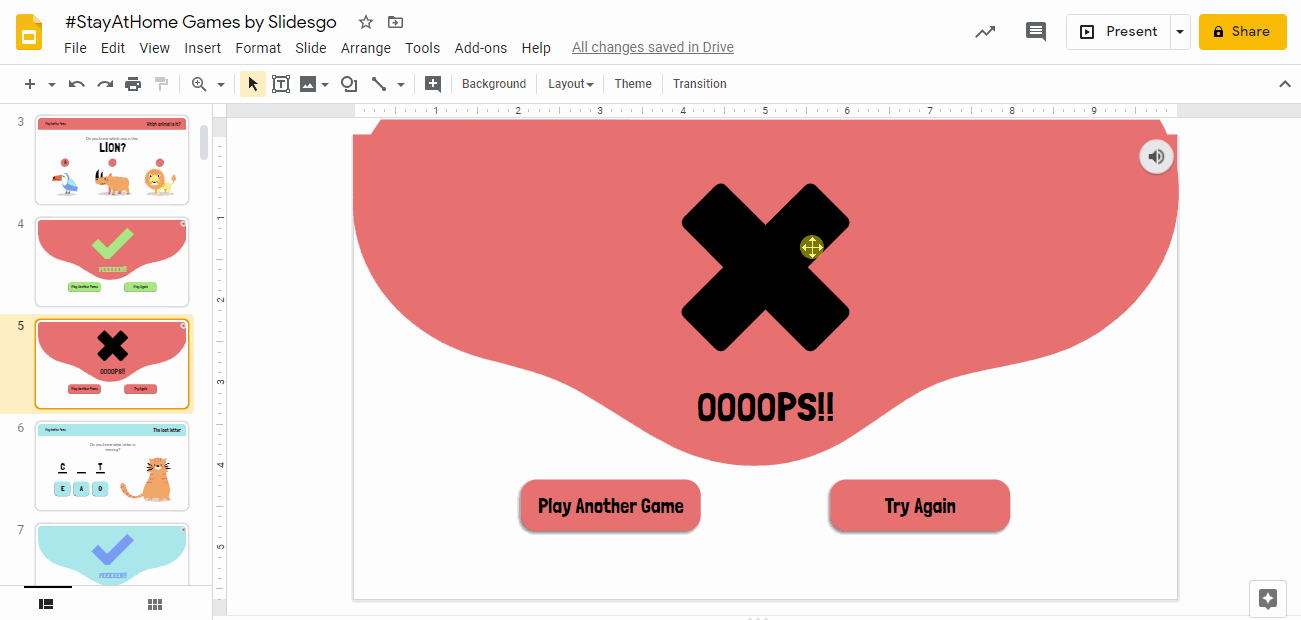
Linking Slides
The main parts of this interactive quiz are ready. Now what we need to do is link the slides. Let’s see how to do it, although you can learn everything about how to add links, you can read How to Add Hyperlinks in Google Slides.
- Go to the answer slide. and add a link to each button.
- In our example, the first button/option is an incorrect answer. It should direct to the “wrong answer” slide.
- Click twice on the button and select the text that appears.
- You have two options: go to the toolbar and select Insert link or either right click on the text and select Link.
- As we need to link this slide to another within the same presentation, select the option Slides in this presentation.
- Remember that this corresponds to the incorrect option. Add the link to the “wrong answer.”
- Click Apply.
- If you don’t like it, remove the underlined effect in your text.
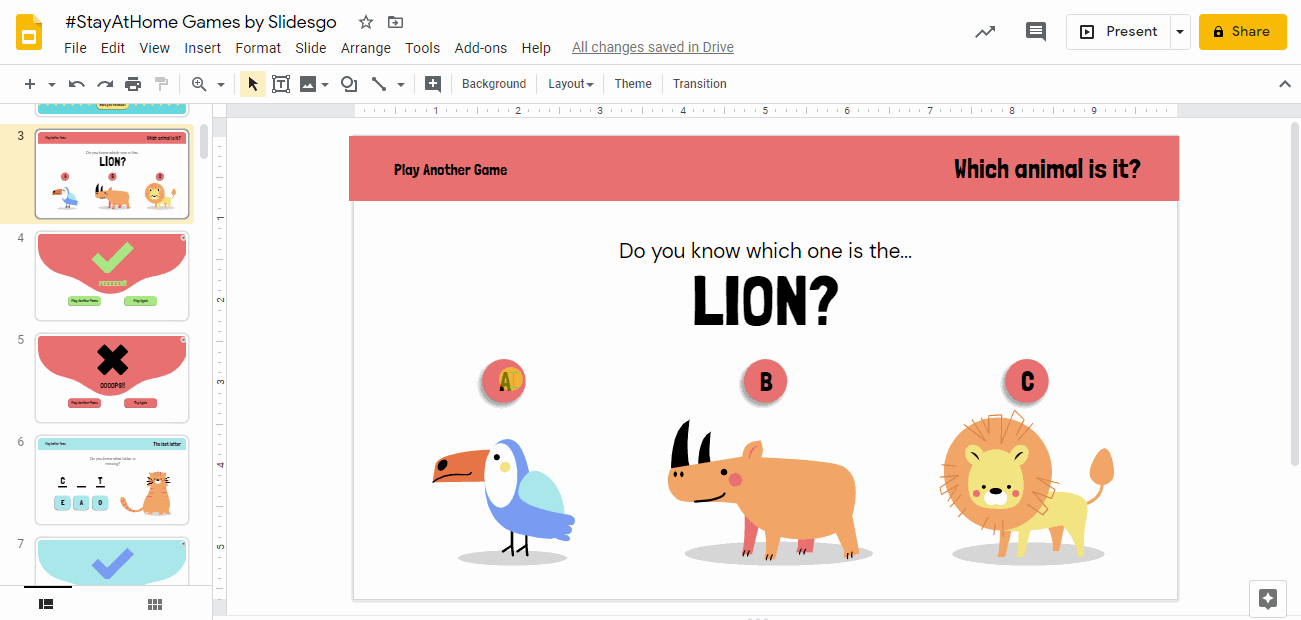
- Great! You have added the first link. Option b is wrong as well, so we need to repeat the same steps.
- Now let’s link option C to the “correct answer” slide! The steps are pretty much the same as in the two previous instances, but we’ll select the link of the “correct answer” slide.
- Hence: double click and select the text of the button.
- Go to the toolbar and select Insert link or either right click on the text and select Link.
- Select the option Slides in this presentation.
- Choose the “correct answer” slide.
- Click Apply.
- Remove the underlined effect if needed.
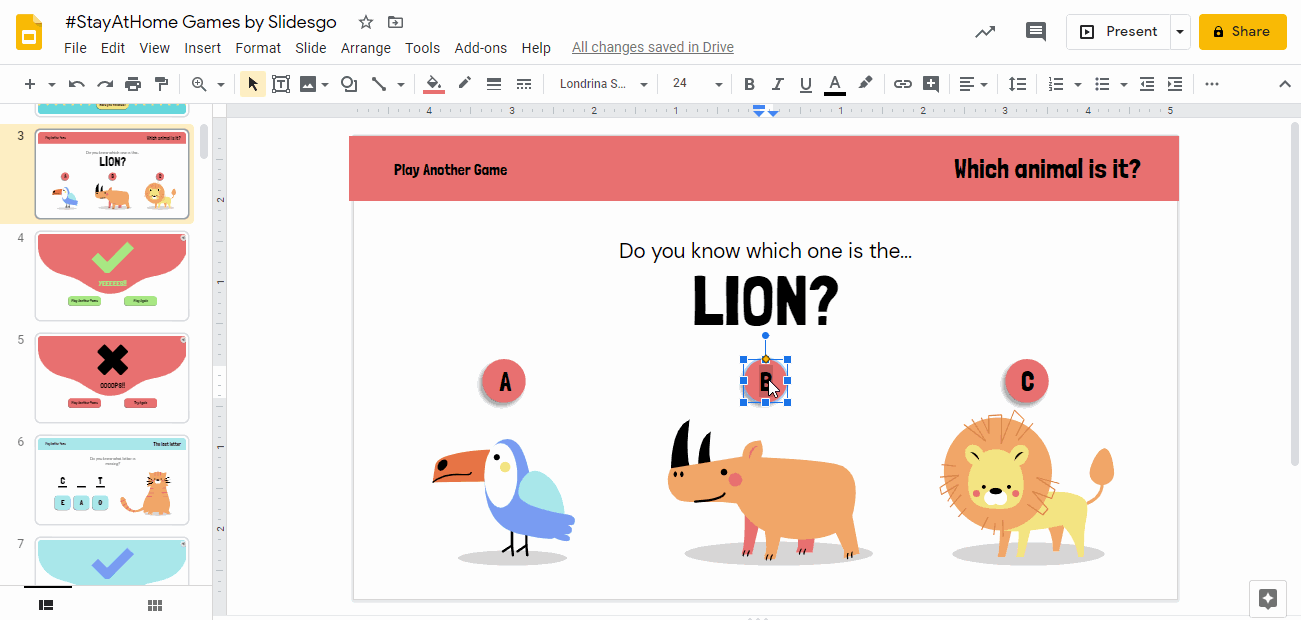
- Brilliant! You have linked the three options successfully. But we need to link the “wrong answer” slide to the “question slide”. Why? If your students provide an incorrect answer, the slides will redirect the child to the answer once again until he or she gets it right.
- Go then to the “wrong answer” slide. Remember that you created a button reading “Try again”.
- Select that button and select Insert link → Slides in this presentation.
- Choose the “question” slide.
- Click Apply.

- Your interactive quiz is ready!
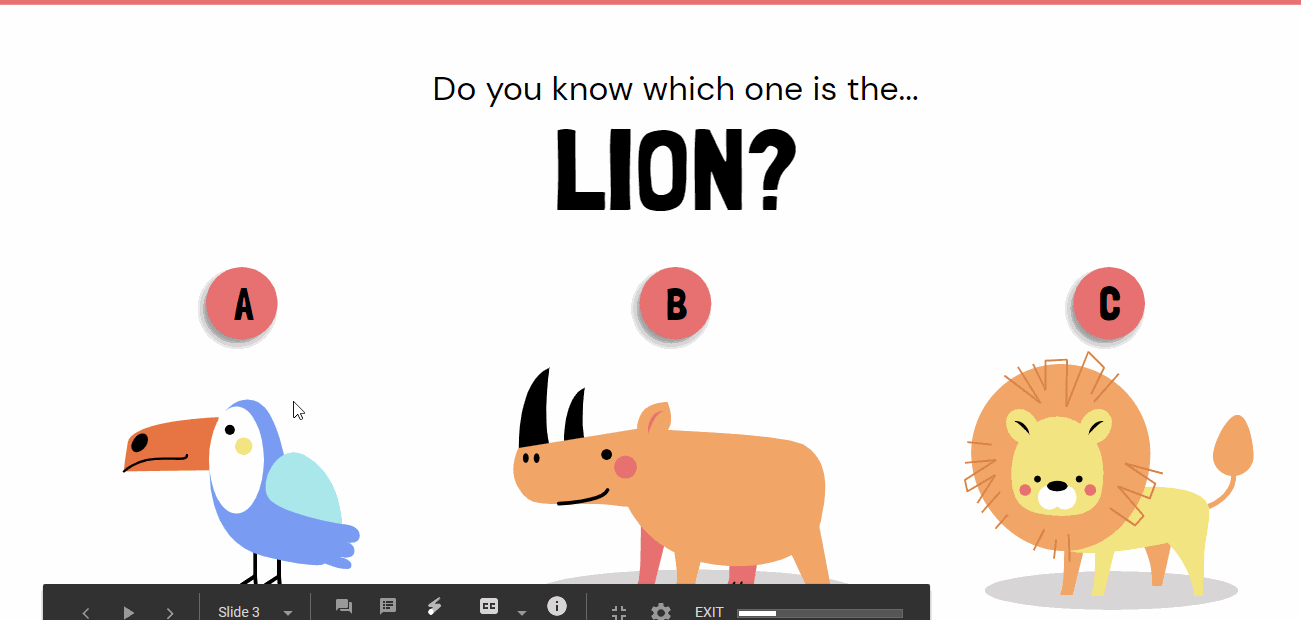
- If you liked the presentation that we have used for this tutorial, you can find #StayAtHome Games and other free education templates for Google Slides and PowerPoint on Slidesgo. Download it for free! It’s 100% editable and customizable.
Tags
EducationDo you find this article useful?
Related tutorials

How Teachers Are Really Using AI in the Classroom: Voices from the Field
“I hope that AI can ensure students are still doing the planning, writing, and critical thinking needed. Students can't lose these skills.” -6th grade Science Teacher, FloridaFull disclosure: I interviewed my mom for this blog post.My mom, a retired 25+ year veteran educator who recently returned to the classroom, told me she felt overwhelmed by AI—and unsure where to start. If my mom, with decades of experience, felt lost in the AI wave, how many other educators are feeling the same?At Slidesgo, we want to support educators navigating the current tech landscape. So we talked to teachers across subjects and experience...

Top 8 About me presentation templates for going back to school
With the new school year just around the corner, we are all gearing up for those first few days of class. As teachers, one of the most enjoyable ways to break the ice and create a welcoming atmosphere is through an engaging about me presentation. It’s a great way to introduce yourself to your students or help them share their own stories. A well-crafted template can make this process meaningful… and fun, too!In this post, you will find the top 8 about me presentation templates for free that are simply perfect for the back-to-school season. These templates are available to help...

Make school fun from day one with Disney and Pixar templates
The shine of new books, the smell of fresh notes, the clink of the pens in your pencil case, the sound of the bell, and the feel of desks… Back-to-school is here, tingling all your senses! But even if this isn’t your first rodeo in the educational arena, there’s an extra flutter in your stomach this time around. Can you feel it? Because back to school is back to fun, and our +100 templates featuring Disney and Pixar characters are just what you need to make it a blast.This school year, get ready to renew and empower your teaching with Slidesgo’s Disney and...

Free printable coloring pages in PDF for back to school
As the new school term approaches, excitement, and anticipation fill the air. One fantastic way to channel this energy is through free back to school coloring pages! These aren’t just for fun—printable coloring pages in PDF format can help kids develop fine motor skills, enhance their creativity, and provide a calming activity amidst the bustle of back-to-school preparations. These engaging materials offer a wonderful opportunity for children to express themselves and ease into kindergarten or preschool with joy and confidence. Whether it's during a break from homework or a rainy day activity, printable coloring pages are a perfect blend of entertainment and education.
